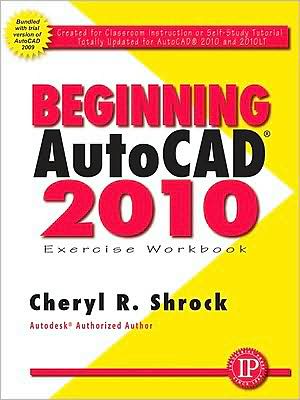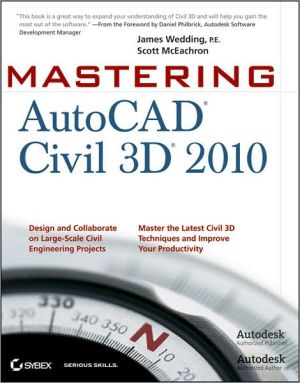The Designer's Guide to VHDL
VHDL, the IEEE standard hardware description language for describing digital electronic systems, has recently been revised. This book has become a standard in the industry for learning the features of VHDL and using it to verify hardware designs. This third edition is the first comprehensive book on the market to address the new features of VHDL-2008.\ * First comprehensive book on VHDL to incorporate all new features of VHDL-2008, the latest release of the VHDL standard...helps readers get...
Search in google:
VHDL, the IEEE standard hardware description language for describing digital electronic systems, has recently been revised. This book has become a standard in the industry for learning the features of VHDL and using it to verify hardware designs. This third edition is the first comprehensive book on the market to address the new features of VHDL-2008.* First comprehensive book on VHDL to incorporate all new features of VHDL-2008, the latest release of the VHDL standard...helps readers get up to speed quickly with new features of the new standard.* Presents a structured guide to the modeling facilities offered by VHDL...shows how VHDL functions to help design digital systems.* Includes extensive case studies and source code used to develop testbenches and case study examples..helps readers gain maximum facility with VHDL for design of digital systems. Booknews Written for engineering students, this introduction to VHDL (a language for describing digital electronic systems for the pre- manufacturing design of hardware systems) covers such topics as scalar data types, sequential statements, composite data types, modeling constructs, subprograms, packages and use clauses, resolved signals, generic constants, and components and configurations. Annotation c. by Book News, Inc., Portland, Or.
\ \ Chapter 1: Fundamental Concepts\ Modeling Digital Systems\ if we are to discuss the topic of modeling digital systems, we first need to agree on what a digital system is. Different engineers would come up with different definitions, depending on their background and the field in which they were working. Some may consider a single VLSI circuit to be a self-contained digital system. Others might take a larger view and think of a complete computer, packaged in a cabinet with peripheral controllers and other interfaces.\ For the purposes of this book, we include any digital circuit that processes or stores information as a digital system. We thus consider both the system as a whole and the various parts from which it is constructed. Thus our discussions cover a range of systems from the low-level gates that make up the components to the top-level functional units.\ If we are to encompass this range of views of digital systems, we must recognize the complexity with which we are dealing. It is not humanly possible to comprehend such complex systems in their entirety. We need to find methods of dealing with the complexity, so that we can, with some degree of confidence, design components and systems that meet their requirements.\ The most important way of meeting this challenge is to adopt a systematic methodology of design. If we start with a requirements document for the system, we can design an abstract structure that meets the requirements. We can then decompose this structure into a collection of components that interact to perform the same function. Each of these components can in turn be decomposed until we get to a level where we have some ready-made, primitive components that perform a required function. The result of this process is a hierarchically composed system, built from the primitive elements.\ The advantage of this methodology is that each subsystem can be designed independently of others. When we use a subsystem, we can think of it as an abstraction rather than having to consider its detailed composition. So at any particular stage in the design process, we only need to pay attention to the small amount of information relevant to the current focus of design. We are saved from being overwhelmed by masses of detail.\ We use the term model to mean our understanding of a system. The model represents that information which is relevant and abstracts away from irrelevant detail. The implication of this is that there may be several models of the same system, since different information is relevant in different contexts. One kind of model might concentrate on representing the function of the system, whereas another kind might represent the way in which the system is composed of subsystems. We will come back to this idea in more detail in the next section.\ There are a number of important motivations for formalizing this idea of a model. First, when a digital system is needed, the requirements of the system must be specified. The job of the engineers is to design a system that meets these requirements. To do that, they must be given an understanding of the requirements, hopefully in a way that leaves them free to explore alternative implementations and to choose the best according to some criteria. One of the problems that often arises is that requirements are incompletely and ambiguously spelled out, and the customer and the design engineers disagree on what is meant by the requirements document. This problem can be avoided by using a formal model to communicate requirements.\ A second reason for using formal models is to communicate understanding of the function of a system to a user. The designer cannot always predict every possible way in which a system may be used, and so is not able to enumerate all possible behaviors. If the designer provides a model, the user can check it against any given set of inputs and determine how the system behaves in that context. Thus a formal model is an invaluable tool for documenting a system.\ A third motivation for modeling is to allow testing and verification of a design using simulation. If we start with a requirements model that defines the behavior of a system, we can simulate the behavior using test inputs and note the resultant outputs of the system. According to our design methodology, we can then design a circuit from subsystems, each with its own model of behavior. We can simulate this- composite system with the same test inputs and compare the outputs with those of the previous simulation. If they are the same, we know that the composite system meets the requirements for the cases tested. Otherwise we know that some revision of the design is needed. We can continue this process until we reach the bottom level in our design hierarchy, where the components are real devices whose behavior we know. Subsequently, when the design is manufactured, the test inputs and outputs from simulation can be used to verify that the physical circuit functions correctly. This approach to testing and verification of course assumes that the test inputs cover all of the circumstances in which the final circuit will be used. The issue of test coverage is a complex problem in itself and is an active area of research.\ A fourth motivation for modeling is to allow formal verification of the correctness of a design. Formal verification requires a mathematical statement of the required function of a system. This statement may be expressed in the notation of a formal logic system, such as temporal logic. Formal verification also requires a mathematical definition of the meaning of the modeling language or notation used to describe a design. The process of verification involves application of the rules of inference of the logic system to prove that the design implies the required function. While formal verification is not yet in everyday use, it is an active area of research. There have already been significant demonstrations of formal verification techniques in real design projects, and the promise for the future is bright.\ One final, but equally important, motivation for modeling is to allow automatic synthesis of circuits. If we can formally specify the function required of a system, it is in theory possible to translate that specification into a circuit that performs the function. The advantage of this approach is that the human cost of design is reduced, and engineers are free to explore alternatives rather than being bogged down in design detail. Also, there is less scope for errors being introduced into a design and not being detected. If we automate the translation from specification to implementation, we can be more confident that the resulting circuit is correct.\ The unifying factor behind all of these arguments is that we want to achieve maximum reliability in the design process for minimum cost and design time. We need to ensure that requirements are clearly specified and understood, that subsystems are used correctly and that designs meet the requirements. A major contributor to excessive cost is having to revise a design after manufacture to correct errors. By avoiding errors, and by providing better tools for the design process, costs and delays can be contained.\ 1.2 Domains and Levels of Modeling\ In the previous section, we mentioned that there may be different models of a system, each focussing on different aspects. We can classify these models into three domains: function, structure and geometry. The functional domain is concerned with the operations performed by the system. In a sense, this is the most abstract domain of description, since it does not indicate how the function is implemented. The structural domain deals with how the system is composed of interconnected subsystems. The geometric domain deals with how the system is laid out in physical space.\ Each of these domains can also be divided into levels of abstraction. At the top level, we consider an overview of function, structure or geometry, and at lower levels we introduce successively finer detail. Figure 1-1 (devised by Gajski and Kuhn, see reference [61) represents the domains on three independent axes, and represents the levels of abstraction by the concentric circles crossing each of the axes....
1 Fundamental Concepts 12 Scalar Data Types and Operations 313 Sequential Statements 654 Composite Data Types and Operations 955 Basic Modeling Constructs 1376 Subprograms 2077 Packages and Use Clauses 2458 Resolved Signals 2679 Predefined and Standard Packages 29310 Case Study: A Pipelined Multiplier Accumulator 33711 Aliases 35512 Generics 36513 Components and Configurations 41714 Generate Statements 44915 Access Types 47916 Files and Input/Output 49917 Case Study: A Package for Memories 53518 Test Bench and Verification Features 55919 Shared Variables and Protected Types 58520 Attributes and Groups 60321 Design for Synthesis 63322 Case Study: System Design Using the Gumnut Core 66923 Miscellaneous Topics 733A Standard Packages 793B VHDL Syntax 841C Answers to Exercises 859References 889Index 891
\ BooknewsWritten for engineering students, this introduction to VHDL (a language for describing digital electronic systems for the pre- manufacturing design of hardware systems) covers such topics as scalar data types, sequential statements, composite data types, modeling constructs, subprograms, packages and use clauses, resolved signals, generic constants, and components and configurations. Annotation c. by Book News, Inc., Portland, Or.\ \ \ \ \ From the Publisher"The second edition of The Designer's Guide to VHDL sets a new standard in VHDL texts. I am certain that you will find it a very valuable addition to your library."\ --From the foreword by Paul Menchini, Menchini & Associates\ \





![Mastering AutoCAD 2010 and AutoCAD LT 2010 [With DVD ROM] Mastering AutoCAD 2010 and AutoCAD LT 2010 [With DVD ROM]](/application/data/covers/60/32/9780470466032.jpg)


